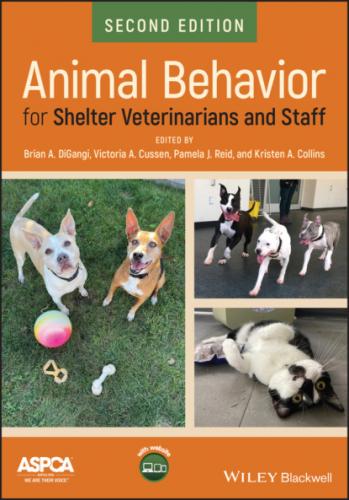13 Appendix A: Canine Body Language A Neutral Relaxed B Greeting Behavior C Initial Greeting D Play Solicitation E Arousal F Offensive Aggression G Defensive Aggression H Maternal Aggression I Crouch J Roll Over
14 Appendix B: Feline Body Language A The Confident Cat B The Confident Cat: At Ease C Distance‐Reducing Behaviors D Distance‐Increasing Behaviors E The Anxious Cat F Defensive Aggression G The Predator H The Groomer
15 Appendix C: Animal Behavior Professionals Academy of Veterinary Behavior Technicians—www.avbt.net American Board of Veterinary Practitioners—Shelter Medicine Practice—https://abvp.com/ Applied Animal Behaviorist Certified Professional Dog Trainer (CPDT)—www.ccpdt.org Trainer Veterinarian Veterinary Behaviorist—www.dacvb.org
16 Index
List of Tables
1 Chapter 3Table 3.1 The four contingencies in operant conditioning.Table 3.2 Reinforcement schedules.Table 3.3 The ABCs of behavior analysis.
2 Chapter 4Table 4.1 Common Stressors and Behavioral Signs of Stress in Shelter Dogs a...Table 4.2 Behavioral signs of pain in dogs and cats (Mills et al. 2020; Bac...Table 4.3 Endocrinological disorders that may lead to behavioral changes.
3 Chapter 5Table 5.1 Sources of program‐planning information.
4 Chapter 9Table 9.1 Behavior evaluations in the published literature.
5 Chapter 10Table 10.1 Key considerations for in‐shelter housing selection.
6 Chapter 15Table 15.1 Advantages and disadvantages of frameworks for assessing behavio...Table 15.2 Types of reliability and validity.
7 Chapter 19Table 19.1 Common ethical decision‐making frameworks (Mullan and Fawcett 20...Table 19.2 Generic ethical matrix for animal shelters* Table 19.3 Example ethical
